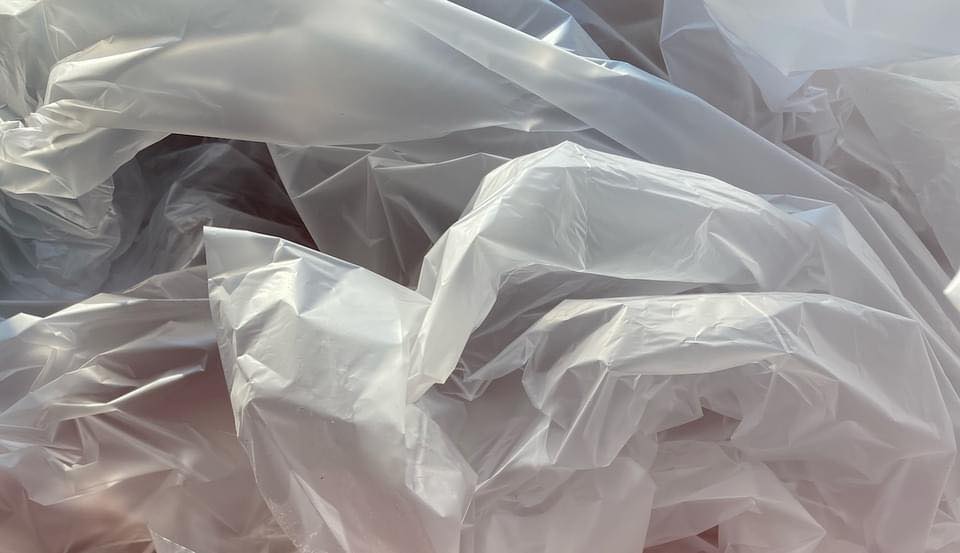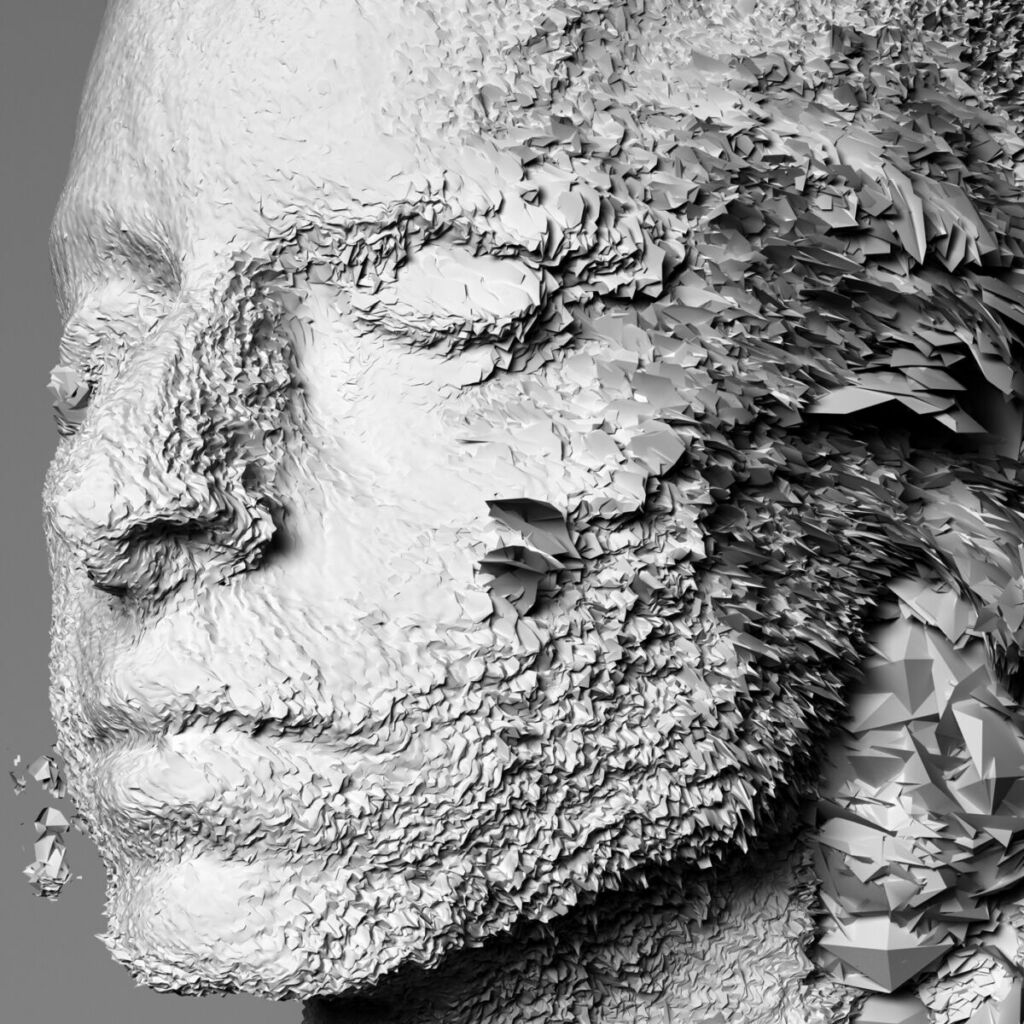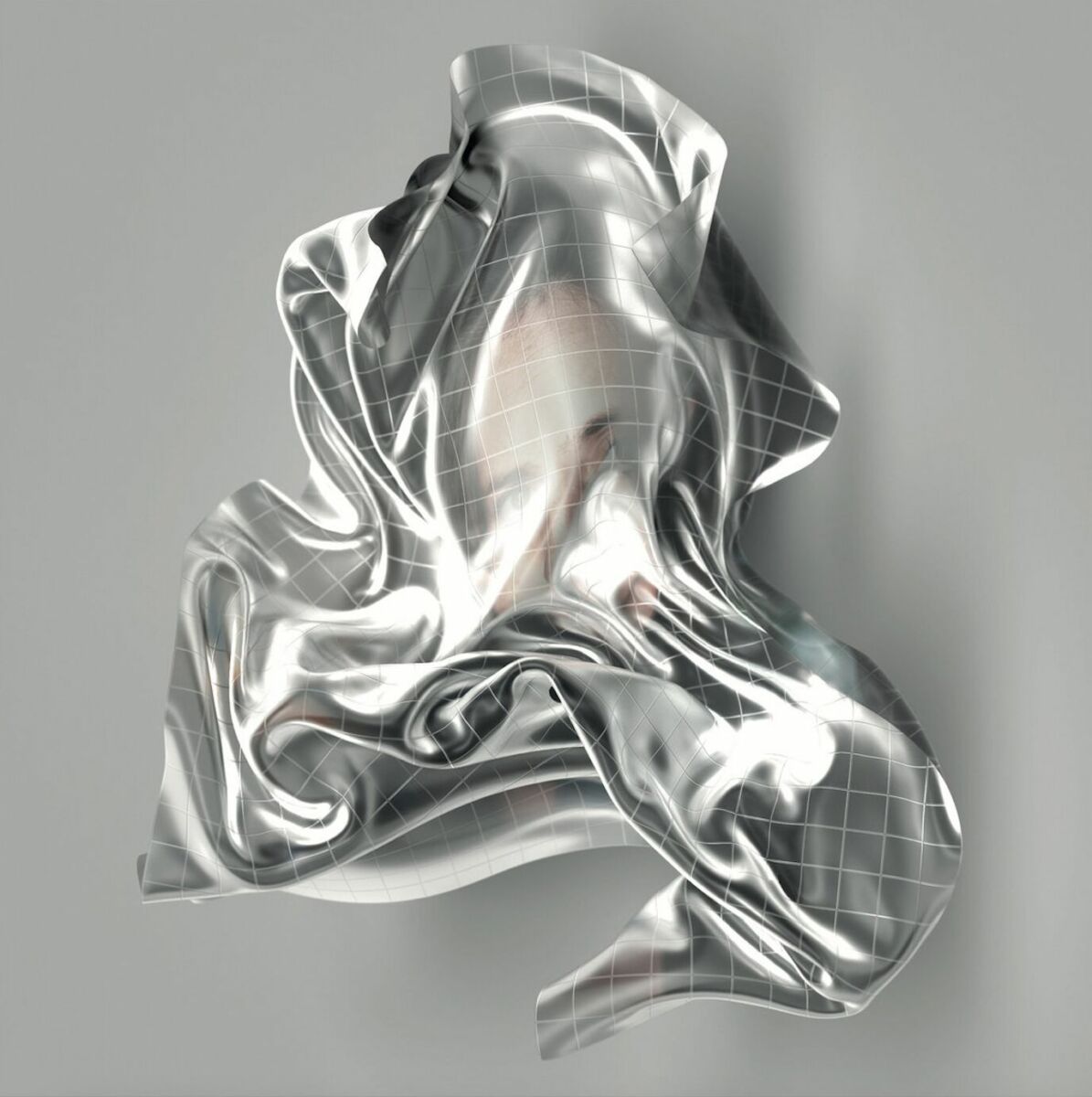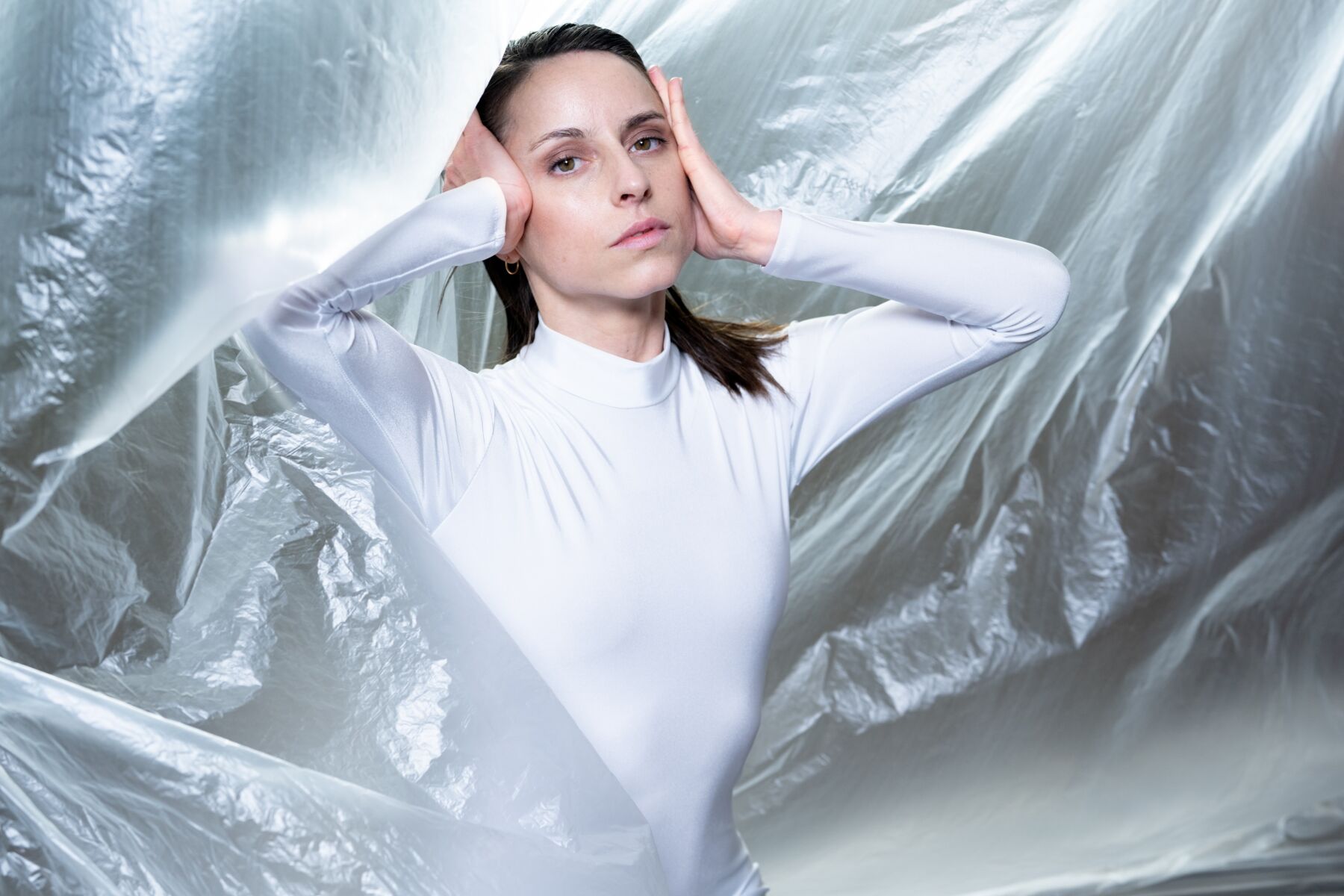Interview by Olya Karlovich

The Swiss composer and sound artist Noémi Büchi has always been driven by sound. Even though she loved music very much as a child, she struggled with reading and writing notes, as mentioned in an interview with 15 Questions. The traditional approach to composing in school and classical music institutions didn’t match her improvisational nature.
However, the artist invariably remained open to different visions and methodologies, skillfully combining them in her practice. Drawing from late Romanticism, post-Romanticism and early modernism, she takes inspiration from composers like Stravinsky, Mahler, Scriabin, and Ligeti. She then puts her own twist on their musical tropes, using a broad range of tools for creative expression, digital and analogue, hardware and software.
Noémi Büchi’s multi-layered compositions are genreless and timeless symphonies. When you listen, it feels like there’s a whole orchestra behind all these complex, captivating soundscapes, even though it’s just one person. That’s why the artist is called an electronic and symphonic maximalist. Büchi goes even further by transforming sound into beautiful, intricate structures and sculptures.
The physicality of sound is what guides the artist’s practice and gives her inspiration. Which, by the way, we can clearly see in her discography. The titles of her Matière and Hyle EPs and her full-length album Matter, literally translate as material or as substance (in the case of Hyle). In this trilogy she questions the state of materiality in a world that is becoming more and more fluid and intangible.
The artist’s upcoming album, Does It Still Matter, set for release on May 24, continues her exploration of the ‘materiality’ of music while pushing the boundaries of musical periods, styles and trends even further. In a press statement about the album, the artist emphasizes her desire to both abolish and reconstruct the musical past. Büchi believes that ‘the new avant-garde isn’t about creating something that doesn’t yet exist, it’s about abandoning and confusing rigid genres.’
Luckily, Noémi Büchi has an impeccable platform for her endless creative experimentation and exploration. Does It Still Matter will mark her second album on the Swiss label -OUS, known for releasing experimental artists like Feldermelder and Furtherset. By the way, Büchi also collaborates with Manuel Oberholzer aka Feldermelder, co-founder at -OUS, on a side project called Musique Infinie. Together, they’ve toured actively and released two notable albums, I and Earth, which are marked by the versatile musical styles of both artists.
In addition to the new album and collaborative and personal projects, Noémi Büchi is preparing to showcase her new audio-visual performance at MUTEK Barcelona. Working with visuals is still new territory for her. And, as the artist herself notes, the main challenge here is to retain the leading role of music. Armed with a varied arsenal of artistic tools and endowed with the virtuosity of working with sound, like a sculptor shaping plastic clay, Noémi Büchi has thus far succeeded in this perfectly.


In previous interviews, you’ve talked about music composers who influence your work, but your practice also draws heavily from sound art, especially in terms of transcending genres. Can you please share some sound artists who inspire you the most and why?
The boundary between sound artists and musicians is very difficult to define. I think that with many contemporary electronic composers, you can speak of both. The question is when it becomes music and when it can be categorized as sound art. But – isn’t it (nowadays) the same thing?
To answer the question anyway – although the interface is not clear there either – I can say that artists such as Eliane Radigue, Beatriz Ferreyra, György Ligeti, Luc Ferrari, Jean-Claude Risset, Susumu Yokota, Laurie Spiegel, Horacio Vaggione, Matmos, Auterche, Tim Hecker, SPIME.IM, Greg Davis, Vanessa Amara, Ata Ebtekar, Ryuji Sakamoto, and many many others have inspired me.
The thing is, everything inspires me, the world, especially the world outside of music, the naked life.
You were primarily trained in the Western classical music tradition. But beyond that, what music has greatly influenced you as an artist and composer?
I think that film and anime music have influenced me a lot. Besides that, I also listened to a lot of folk music from many different cultures and continents. I have always been very interested in how culture can shape music or the way of doing or thinking about music, what variations exist, and, therefore what functions music can fulfil in different cultures.
Confusing rigid genres, you also support the idea of “recycled” art/sound, so to speak, in the sense that perhaps there is nothing truly new in this world, and all our creations are nothing more than variations. What is your process for creating your own unique sound from various eclectic elements? What are the key steps along the way? And how would you define the concept of authenticity within your music in general?
Definitely, I see myself as a kind of “recycler of music. “:) It is right that “the new “doesn’t really exist; it is an illusion. There are only variations of what has already been done. Maybe music in itself has never been invented by us.
Everything is unique as it is a variation that can never be reproduced exactly the same way. In that sense, my authenticity lies in how I put things together and the musical decisions I make. I truly believe that the authenticity in music lies in the choices one makes. This is how you recognize a character, a person, an aesthetic attitude, and an artistic signature.
Your new Does It Still Matter album evolves beyond the linear understanding of time, blending past, future, and present into one euphoric moment. Could you tell us more about the role of time and the concept of memory in your work?
By blending the past, the present and the future, I am talking about the mixture of musical periods, styles and trends. From a technical point of view I also find it very interesting to mix techniques or aesthetic directions from different epochs.
Memory plays a very important role in my compositions. Because it is the only thing that can survive for generations. It is passed on collectively over generations and generations. A whole collective feeling arises and shapes musical styles.
And even in a narrower context, memories play a very important role, also my own memories. They are the source of many creative impulses.
How would you define the place and role of your new album in your music catalogue? And what is its conceptual and emotional connection to your previous works, Matière and Matter?
That’s a complicated question. I don’t have a clear answer. What I have tried to do is to accentuate the level of “materiality” in the music and to intensify the mixture of genres. For me, this album is clearly another step in my musical process, so it’s also of a technical nature. In terms of sound design, I have tried out new things and am always trying to refine my musical language. It’s probably a never-ending process, which I think is super nice.
In terms of concepts, I wanted to play with the titles and the word “Matter” and take the whole thing further, passing from a noun to a verb and from a single word to an inquiry. I transferred from a focus on substance to questioning.
How do you balance intellectual/conceptual and emotional aspects in your practice with complexity and accessibility?
For me, it’s a bit like cooking. What counts is the right mix of ideas, imagination, and the balance between spices and colours. I define this balance by consciously limiting elements. Sometimes, an idea has to be scaled down considerably so that it makes sense as a whole and is still accessible. Again, it’s about making conscious decisions.
Accessibility is a difficult term because it is very individual for everyone. Certain musical structures that seem very dense and complex can be very appealing to some people and very unpleasant for others. And simplicity can pick up many people, while others don’t (can’t/won’t) feel connected to it.
I think simplicity has great power, and if I can’t find simplicity in my compositional process, it’s usually a bad sign. Even if the music may sometimes seem complex, the process and construction is based on simplicity.
In one of your interviews, you mentioned that you always start working on a new work with an idea and only then look for a technology/instrument to express it in the best possible way. But are there situations when you get inspired by a particular technology/instrument or the sound it produces?
Yes, absolutely. Basically, I’m interested in everything that is sound, whether it’s a specific instrument, an object, or ambient sound. If I hear potential for a musical idea, then it grabs me. For example, two years ago in summer in Spain, I was interested in a humming electricity box on the edge of the road. Its sound had so many overtones that it almost sounded like music at times. It was a wonderful drone (that I luckily recorded).
In addition to your solo work, you are also working on a Musique Infinite project with Feldermelder. How does your approach to composition and production change within this context?
It is something completely different. The whole process only works in a certain way. It’s about listening to each other and trying things out. Our method is actually based primarily on improvisation, which doesn’t involve much talking. The production is then of a more rational nature, where we have to find the common vision of the music, i.e. we also have to discuss it.
You also work with visual artists, for example, Christoffer Jorgensen, within the ECLIPSE project presented at Ars Electronica last year. What role does the visual component play in the embodiment of your artistic ideas? And what does the ideal balance between the musical and visual aspects of an immersive experience look like to you?
This is still a new field for me, and I’m still working out my ideal scenario. It’s not easy to mix two media without them cancelling each other out. For me, my first show, ECLIPSE, was a great experience. I learnt a lot, and now I’m looking forward to taking the next step and leaving out the things that bother me.
I’m looking for a constellation where the music actually plays the main role and not the other way round. It can be very challenging as we humans are always prioritising; I guess it’s instinctive.
For my new show, Does It Still Matter, which I will present for the first time at Mutek in Barcelona in April, I am trying to emphasize the emotional components of the music. I used very minimalist means for the visuals. I don’t want to say much more yet. It’s a work in progress.
What’s the most memorable sound you’ve heard this week?
The wind and the rain.
What’s your chief enemy of creativity?
Stress.






